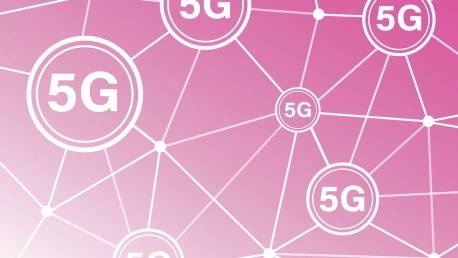The launch of 5G represents a significant milestone in communication technology. With its ultra-fast speeds and increased reliability, it is poised to revolutionize our digital interactions. The scope of 5G extends beyond simply boosting smartphone performance; it is set to enable a wave of innovative services and applications, alongside transforming various industries, potentially redesigning how we live and conduct business.As 5G rolls out, its vast potential may bring to life many futuristic concepts that seemed years away. It’s expected to facilitate advancements in areas like telemedicine, autonomous driving, and the Internet of Things (IoT), making our environment infinitely more connected. Ultimately, 5G technology could redefine the foundations of our digital ecosystem, impacting every corner of modern society by allowing higher data rates, reduced latency, energy savings, cost reductions, and higher system capacity.This evolution in connectivity isn’t just about raw speed; it’s about the seamless and instantaneous exchange of information, which will benefit both businesses and consumers alike. As the digital landscape prepares for these changes, 5G stands ready to unlock new possibilities and drive forward progress in our ever-more connected world.
The Mechanics of 5G: A Technological Leap Forward
5G technology is not just about blazing-fast data transfer—it’s a complex, multi-layered advancement that extends far beyond its predecessors. At the heart of its prowess lies its ability to significantly lower latency and expand bandwidth capabilities. These foundational improvements allow for near-instantaneous communications between devices, enabling technologies that can operate in real time, a necessity for applications such as remote surgery or automated vehicles. The mechanics of 5G rely on a sophisticated orchestration of advanced modulation schemes that boost the spectrum’s efficiency, allowing more data to pass through the airwaves with increased precision.This technologically refined approach to wireless communication not only paves the way for a surge in mobile broadband experiences but also serves the varied requirements of the Internet of Things (IoT) landscape. The varying needs of connected devices, from low-power sensors to high-definition video streaming terminals, are addressed by the robust, versatile, and scalable nature of 5G networks—a leap forward that multiplies the potential for innovative applications and services across the digital ecosystem.
Navigating the Challenges and Risks of 5G
Dizzying speeds and near-cinematic data experiences come with their own set of challenges and exigencies. One of the foremost challenges is the issue of cybersecurity. The proliferation of connected devices and complexity of 5G networks expands the threat landscape, introducing vulnerabilities not only at the edge but throughout the network. It is incumbent upon service providers and enterprises to implement robust security measures and anticipate potential breaches by employing the most advanced encryption technologies available.Then, there’s the issue of the infrastructural revamp. The shift to 5G entails substantial investments in new antennas and base stations, particularly when it comes to adapting the newly allocated high-frequency bands. These channels, pivotal for achieving the highest speeds, have a shorter range and poorer penetration through solids—complications that necessitate the deployment of a larger number of smaller cells. Such logistical challenges raise the costs and complexity of network deployment, making it a strategic puzzle for evenly and effectively spreading the wonders of 5G connectivity across diverse geographic and socioeconomic landscapes.
5G’s Infrastructure and Deployment Strategies
5G’s deployment is a nuanced endeavor, requiring careful strategizing around the implementation of its foundational infrastructure. The 5G NR (New Radio) is the global standard for a much more capable air interface designed to connect virtually everyone and everything, including machines, objects, and devices. The network slicing feature allows multiple virtual networks to be created atop one physical network, providing the capability to meet the specific needs of different applications, whether it be for speed, capacity, or security.The rise of private networks is another pivotal aspect of 5G’s infrastructure, particularly appealing to businesses that require secure, reliable, and tailored connectivity. Such networks can offer organizations the ability to prioritize traffic, control sensitive data, and implement their own policies—bringing network management into the purview of enterprise control. This strategic infrastructure planning will be at the core of 5G success stories, as different sectors look to leverage the technology to its full transformative potential.
The Transformative Impact on Industries and Urban Landscapes
The implications of 5G for industries and urban environments are vast. Consider the automotive sector, where the integration of 5G brings autonomous vehicles closer to reality. High-speed, reliable connectivity is essential for these vehicles to process vast amounts of data instantaneously, facilitating safe and efficient operation. Manufacturing stands to be revolutionized as well, with 5G enabling enhanced automation, better supply chain management, and real-time monitoring of operations, leading to greater efficiency and decision-making.Urban landscapes are also on the cusp of a metamorphosis, with 5G amplifying the impact of the Internet of Things on smart city infrastructure. Everything from traffic management to public safety can benefit from faster, more reliable connectivity. Enhanced augmented and virtual reality experiences prove potent in transforming professional trades and entertainment, delivering rich, immersive experiences without lag. Edge computing, too, takes a significant leap forward, as 5G encourages data processing closer to the point of collection, expediting insight generation and application responsiveness.
IBM’s Role in Fostering 5G Integration
IBM, as a stalwart in the technology space, is driving the integration of 5G into the modern digital landscape. With its Cloud Satellite service, IBM offers organizations the ability to deploy applications consistently across diverse environments. This enables a harmonious blend of 5G’s capabilities with the extensive reach and security features of cloud computing. IBM’s resources are particularly instrumental in establishing a robust backbone—necessary for industries to draw upon the myriad benefits of 5G while streamlining operational efficiency, compliance, and scalability.IBM’s engagement in the 5G domain extends from providing infrastructure support to facilitating end-to-end management of applications. The breadth of IBM’s cloud capabilities serves as a testament to the company’s commitment to ensuring that 5G’s potential is fully realized across sectors, aiding enterprises to navigate the transition smoothly and capitalize on the opportunities inherent in this next-gen connectivity paradigm.









